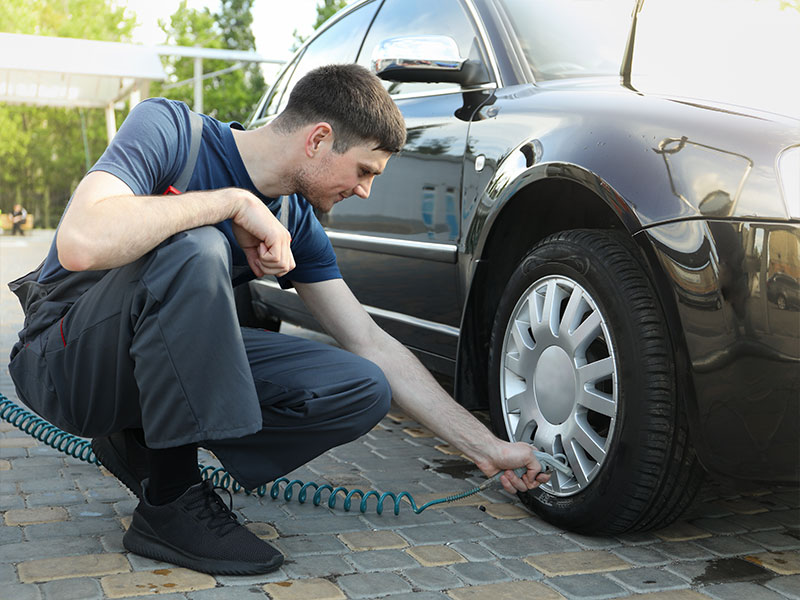There are many reasons why you keep getting flat tires. It can be very frustrating to come out to your car or truck in the morning after inflating your tires to the recommended tire pressure, only to find that they are flat again. Let’s solve this problem for you.
Why Do I Keep Getting Flat Tires On My Car?
• Temperature Fluctuation
• Improper Inflation Damage
• Road Hazards
• Debris Punctures
• Sidewall Damage
• Dry Rot
• Valve Stem Damage
• Tire Bead Failure
• Rim Defect
Maybe your tires aren’t completely flat but just low on tire pressure. This is a common situation too.
Hopefully, you’re not in the group that has experienced blowouts frequently. If this is you, we’ve got you covered as well.
No matter your situation. We’ll break down all of the different types of flat tires and all of the causes so you can understand your situation and determine the best course of action to prevent it from happening again, or manage the source of the problem.
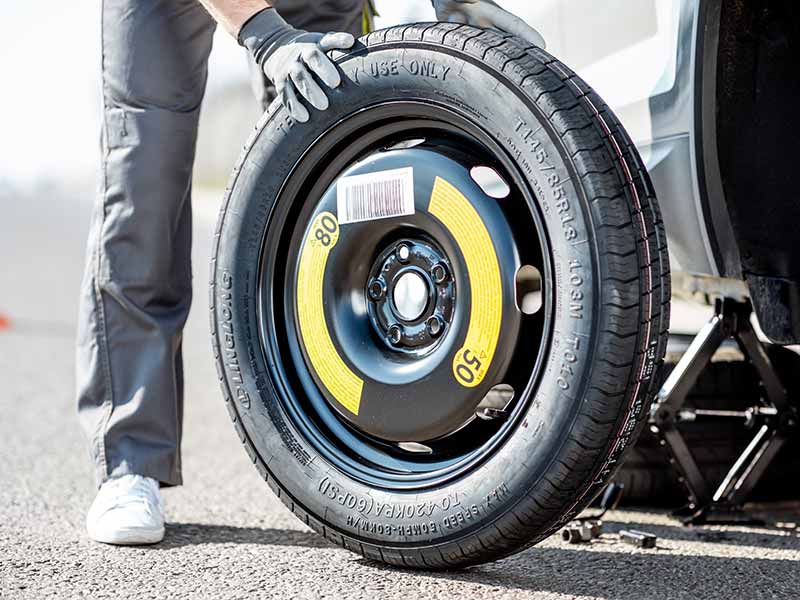
What Causes Flat Tires
There are a lot of different reasons you could have a flat tire. We tend to usually think a sharp object punctured it somewhere, but that isn’t the only reason. Let’s go over all of the main causes of flat tires.
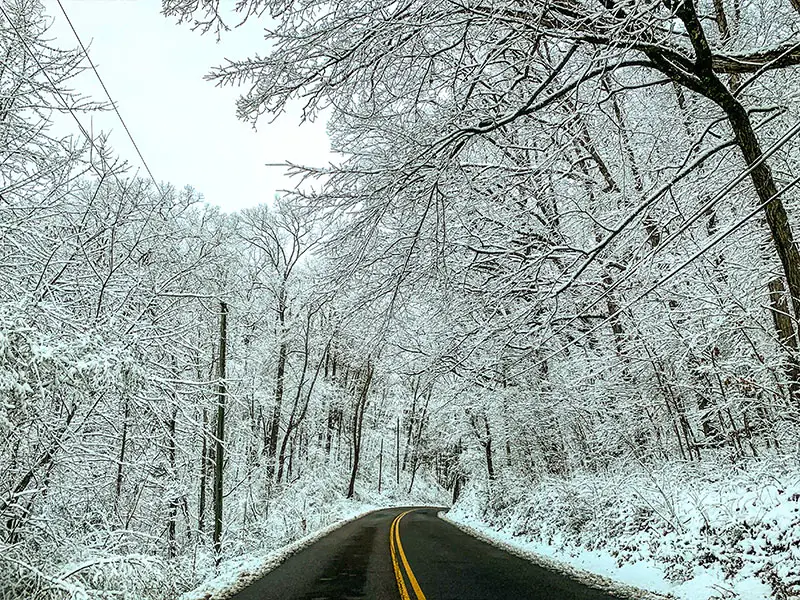
Temperature Fluctuation
Low pressure is often just colder temperatures. Colder air will compress slightly and cause a slight drop in tire pressure. Adding a little air usually solves this problem. It’s common and will usually happen every fall or on particularly cold days.
While it isn’t a significant problem it can be enough of a drop to trigger the TMPS warning of your car or truck. This doesn’t mean you should ignore it.
Tires will very slowly lose air over time via permeation. Permeation rates vary for many reasons but it’s not uncommon to see 1 to 3 pounds of pressure loss per month. Since the temperature has a measurable effect on tire pressures, it is going to usually trigger the indicator if permeation has reached a significant amount. A TPMS indication does seriously mean that you need to check your tire pressures. Enough air has slowly permeated through the tire to now require it to be topped back up.
Also, when fall rolls around, temperatures will continue to drop. This means that the problem won’t correct itself anytime soon. If not topped up you can accelerate the wear of your tread on the inner and outer edges of the tires.
I’ve seen valve stems and poor bead sealing cause hard to find leaks that can occur randomly due to certain conditions.
TireGrades Expert Tip
Improper Inflation Damage
Proper inflation is important for many reasons. Not only will it help ensure your tire tread wears evenly and help keep your tires best grip the road, but it will also protect your sidewalls.
Riding on tires that are not inflated properly causes the sidewalls to bend at the bottom where the tire meets the road. As the tire rotates every part of the sidewall flexes back and forth. If you’ve ever bent a paper clip back and forth you know what happens – it breaks eventually.
It may seem like rubber shouldn’t have this problem, but you have to remember you’re dealing with rubber that is holding up tons of metal and being flexed hundreds or thousands of times a minute.
Not only can this lead to a flat, but it is very likely to lead to a catastrophic blowout with even moderate underinflation.
I’ve personally witnessed more than one catastrophic blowout due to extreme underinflation. Recently, I mentioned to my stepson that the car in front of us on the interstate was likely to wreck soon. I maneuvered over several lanes and backed away and within seconds the tire blew and the car veered hard into a Jersey barrier.
It’s hard for me to understand how the driver didn’t realize the tire was extremely low. He was on his phone and likely not paying enough attention. All cars since 2007 in the United States are required by law to have a TPMS system. The car was newer than this so either there was a problem with his tire pressure monitoring system or he more likely ignored the warning.
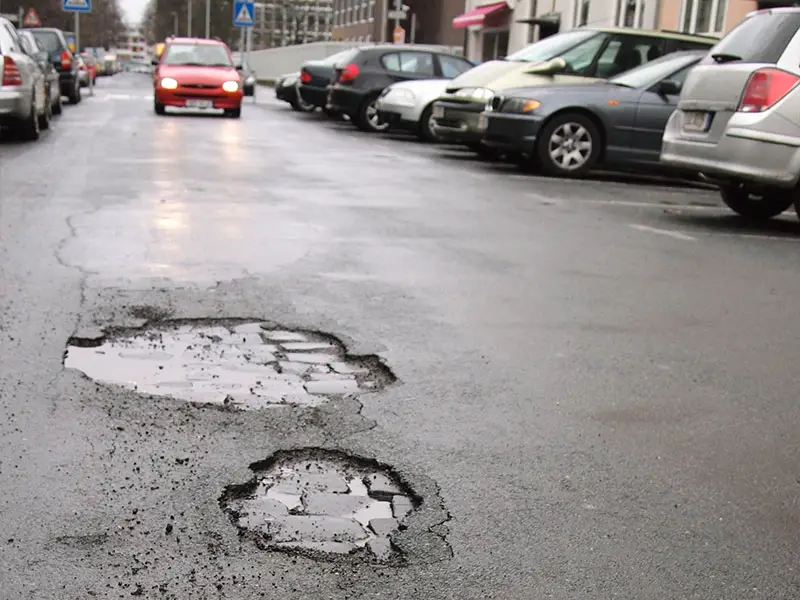
Road Hazards
Road hazards such as potholes, construction zones, gutters, curbs, and more can all cause various types of tire damage.
The damage from a road hazard could be minor and not create an immediate problem but could result in a significant problem over time.
If you frequently travel routes that have rough road surfaces or you are not as attentive as you could be around curbs, gutters, and other road features that could damage your tires, you may want to pay more attention to help reduce your chances of getting a flat.
It’s important to check for damage if you suspect you’ve struck a road imperfection with enough force that it could have damaged your tire.
Debris Punctures
Some people travel in areas that are more prone to road debris that can cause punctures. Construction workers are very familiar with this. Those living in or around new construction may also be at much higher risk.
Workers can inadvertently drop nails, screws, sheet metal, or other sharp objects that can cause damage.
Some areas of the country also have natural debris that can cause punctures. Sharp rocks and cactus can easily cause tire punctures.
Sidewall Damage
Sidewall damage can occur in a few ways. The most common is from hitting curbs with significant force. This can cause gashes in the sidewall, sidewall bubbles from broken belts within the tire, or repeated rubbing and scraping can wear significantly into the sidewall.
If you’re a bit too careless around curbs and when parking you could be causing regular damage that builds up over time.
Hitting road hazards at high speed can also cause sidewall damage. It’s important to pay attention to any significant strikes your tires take.
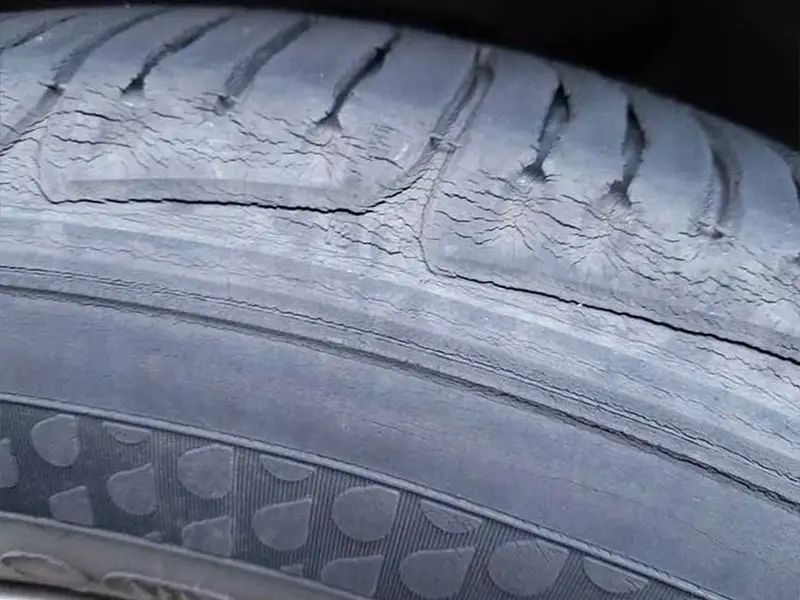
Dry Rot
Older tires can suffer from dry rot. Dry rot is caused by age due to the reaction of ozone and the ultraviolet rays from the sun breaking down the rubber compounds in the tire and causing them to become more brittle.
You can often see dry rot as small cracks around tread blocks or along the sidewall.
Tires should be replaced no matter their condition when they are older than 6 years. Tires come with a chemical infused in the rubber called antiozonant. This chemical helps to counteract the chemical reaction ozone has on the rubber to keep it elastic longer. It will react with and neutralize the ozone to prevent it from reacting with the rubber and causing it to dry out.
Tires will turn slightly brown with age as the antiozonant leaches out to the surface and reacts with the ozone in the air.
You can help slow the dry rot process by regularly applying a protectant to your tires. Most tire shine products are formulated to help defend against ozone deterioration.
Valve Stem Damage
Valve stems can become damaged in many ways. Coming into contact with curbs can bend them in such a way that the valve can become damaged or tear the rubber the valve is embedded in.
Also, inclement weather or debris can damage a valve that isn’t protected by a valve stem cap.
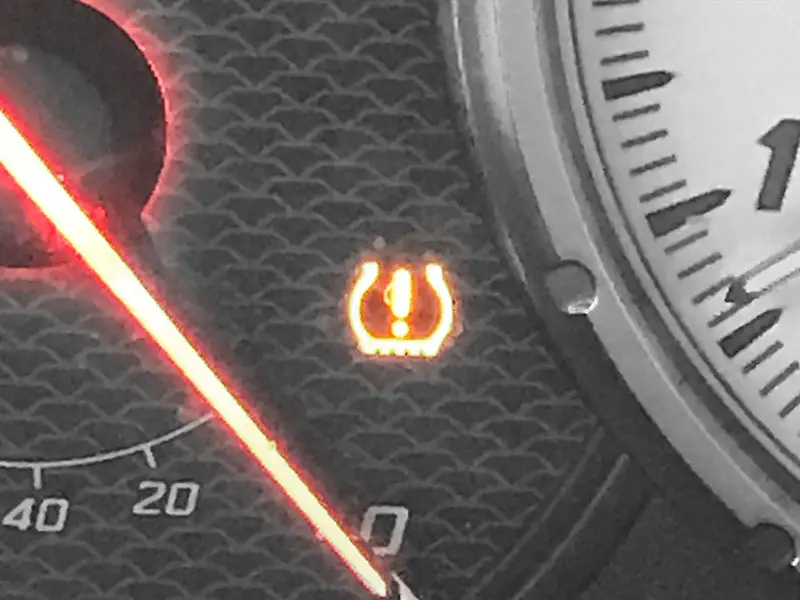
Tire Bead Failure
The tire bead is what forms a seal between the tire and the rim. Modern car and truck tires don’t contain inner tubs and rely on this seal to keep the air in the tire. Damage from potholes, curbs and other accidents can potentially damage the tire bead and prevent it from sealing properly.
Staying vigilant at avoiding road hazards and curbs is important to maintaining the health of the tire bead.
Wheel Defect
Wheel defects can take many forms but the most common culprit that causes a flat tire is a bent wheel. Hitting road hazards or curbs can not only damage your tire but also damage the wheel itself. This can cause the tire bead to lose its seal.
Wheels can also have manufacturing defects. It’s possible for some wheels to have pinholes that allow air to slowly leak. Also, multi-piece wheels may not seal properly after manufacture and leak air through a small gap between the rim halves.
What Is The Most Common Cause Of A Flat Tire? Punctures
The most common cause that is reported for flat tires is a puncture. In addition to doing what you can to avoid punctures, you may want to consider tires that are designed to better handle punctures. Michelin self-sealing tires are something you may want to consider. Michelin SelfSeal claims it can seal punctures from nails and screws up to 1/4 inch. Run-flat tires may also be a consideration. Run-flat tires will still trigger a low tire pressure warning but allow you to drive for up to 50 miles at 50 miles per hour.
Types Of Flat Tires
These are the 4 types of flat tires that we’ll be covering in this article. Each type has unique causes, unique solutions, and unique ways to prevent it in the future.
Low Pressure / Under Inflation
A common problem that every tire pressure monitoring system in our car or truck experiences is the TPMS light on our dashboard. Most of us have experienced this in the fall as the temperatures begin to drop.
Air becomes denser when it’s colder and therefore takes up less space. The air literally shrinks as it gets colder. This causes the pressure in your tires to drop a couple of pounds and can be enough to drop below the minimum threshold set in your tire pressure monitoring system.
Slow Leak
Slow leaks are very frustrating and can have several causes. The end result is that over the course of a day, week, or even month, you can lose significant air pressure in your tires. This is obviously more than what a simple outside air temperature change could cause.
Slow leaks can be extremely difficult to diagnose. When the air is leaking out extremely slowly, you may not be able to hear the air escaping. You also can’t as easily wet the tire and look for bubbles if it is an extremely slow leak.
Fast Leak
Fast leaks are dramatic but not catastrophic. A fast leak can take as long as an hour but is usually only seconds.
Fast leaks are usually very easy to diagnose. A fast leak will usually be quite obvious. You can either easily see it, will have remembered an event that caused damage that led to it, or can easily hear it to find the source.
Blowout
Blowouts are catastrophic events and extremely dangerous. Unfortunately, they are far more common than they should be. Fortunately, tire pressure monitoring systems have helped to reduce the number of blowouts and accidents related to them.
The major reason for a blowout is the driver. While a blowout isn’t always the driver’s fault, it usually is. The reason the driver is at fault for most blowouts is they failed to take action when there was an obvious problem.
Ignoring a low tire pressure warning on your dashboard is a common reason. Another is hitting road debris or a road hazard and not stopping to inspect for tire damage.
I’m not suggesting that every time you hit a pothole you need to stop and get out of your car or truck. What I am suggesting is that if you run over something significant and you notice a change in the way your vehicle behaves, you need to stop and see what happened. You could have a punctured tire or bent rim that is causing the tire to lose pressure and is affecting the way your car or truck drives but not yet to the point that it is dangerous.
How To Prevent Flat Tires
Here are 4 important things to do to help prevent flat tires:
1. Pay Attention To Tire Pressure Monitoring System Warnings
Take your TPMS system seriously. It’s very easy to not want to take a minute to top up your air pressures or ignore the warning light. We’re all busy and are usually more focused on the task at hand. Stopping to inspect your tires and top up pressures when your TPMS light comes on can literally save your life.
If you don’t have a tire pressure monitor installed in your car or truck I highly recommend you get one.
To make yourself more likely to take care of this problem when it happens, I suggest keeping everything you need to do the job quickly and easily in your trunk. I recommend getting a good-quality tire inflator that is easy to use and has an easy-to-read gauge.
My best suggestion is the Craftsman V20 Inflator. It has a large digital gauge and can be powered by plugging into a wall socket, 12-volt car power socket, or a battery. It’s not terribly expensive or large. You can set it for the recommended tire pressure listed on the sticker in your car or truck’s door jam and it will automatically turn off when it reaches the desired pressure.
2. Avoid Road Hazards And Debris
It’s not possible to avoid everything but you can make a point of paying more attention when you’re driving and do your best to avoid potholes, branches, rocks, metal, glass, and other debris. It would also be wise to slow down when you’re in areas where there is construction or rough road conditions.
As you drive our regular routes around town begin to make a mental note of severe bumps and other issues that you need to avoid.
3. Avoid Hitting Or Rubbing Curbs
Hard hits on curbs can seriously damage tires. It can be surprisingly easy to damage sidewalls, tire beads, or rims. Damage can even happen when moving slowly trying to park your car or truck.
No one means to slam their tires into a curb but it does happen. No matter the situation, the damage could cause a flat immediately or set you up for a serious problem later down the road.
If you’re someone with a lot of curb rash on your rims you are definitely a candidate for paying more attention to your parking maneuvers.
4. Check Your Tires Regularly
It’s smart to occasionally walk around your car or truck and give your tires a quick scan for any obvious damage. You won’t be able to easily inspect your tread on most vehicles but you should give your sidewalls and good inspection.
Check your sidewalls for bubbles, gashes, and signs of dry rot. Also, be sure to check your rims for bends from hard hits. You’ll obviously also want to keep an eye out for any punctures.
If you can check the tread I recommend doing that as well. Even if you can’t easily do so thoroughly it’s worth getting a look at what you can while you’re doing your inspection.
If you find any damage to your tires or wheels you should have it addressed immediately.
How To Tell If A Tire Is Flat Or Just Needs Air
Usually when your tire pressure monitoring system light goes off your tires aren’t flat and just need air. It can be unsettling though if you’re not sure whether it’s safe to drive on or not.
You’ll want to check the pressure in each tire and compare to the amount of air pressure they are supposed to have.
You can find the recommended air pressure on a sticker on your driver’s door frame. It’s usually located near the door latch. Sometimes the sticker is on the edge of the door.

If there is a significant difference in pressure, 10 pounds or more, you almost certainly have a puncture or leak and should get it addressed immediately. If the pressure drop is closer to 5 pounds or less it could be just normal pressure loss over time combined with temperature fluctuations.
If all of your tires are slightly low on pressure and none are significantly lower than the others it is most likley just normal air loss and just needs a little air to bring the pressures back up.
If there is one tire inparticular that has a lower pressure than the rest, inspect it for objects penetrating the rubber or cuts in the rubber. Check the tread and sidewalls. You’ll need to roll your car or truck forward or backward a little to rotate the tires enough to be able to see the portion that is on the pavement.
If no foreign objects are found in the tread or sidewalls and there don’t appear to be any obvious cuts or punctures, try increasing the pressure to the recommended level and listen for any air leaks. If no hissing sound is heard, check the pressure again after 10 minutes or so and see if the pressure has dropped.
If the pressure hasn’t dropped after 10 minutes, check again after an hour or two. If the pressure still hasn’t dropped, keep an eye on the pressure until you feel comfortable that there isn’t a slow leak that needs to be fixed.
Frequently Asked Questions
WHAT CAN DRIVING ON A FLAT TIRE DO?
Driving on a flat tire is extremely dangerous and expensive. Here are the things you can expect if you try to do so:
- You will ruin any chance of being able to patch the tire and continue to use it.
- You will ruin the rim the tire is mounted on and need to replace it.
- You run an extreme risk of getting into an accident since you have zero traction at one corner of your vehicle.
CAN A POTHOLE CAUSE A FLAT TIRE?
A pothole can easily cause a flat tire. Hitting a significant pothole at speed can damage the rim which can lead to a flat. It can damage the sidewall by snapping belts embedded in the tire. It can even cause a pinch flat where the sidewall folds over and becomes punctured on the edge of the pothole in severe cases with an already underinflated tire.
CAN YOU DRIVE WITH A FLAT TIRE?
No. Driving with a flat will not only ruin the tire, if it isn’t already but will ruin the rim which is quite expensive. Also, it is obviously extremely dangerous to attempt.
The only exception to this is a run-flat tire that is designed with reinforced sidewalls and can be driven for up to 50 miles at up to 50 miles per hour.
CAN LOW TIRE PRESSURE CAUSE A FLAT TIRE?
Yes, it can and it can lead to a catastrophic blowout. Low tire pressure causes the sidewall of your tire to flex and build up extreme heat rapidly which will cause it to fail in spectacular fashion. While slightly low tire pressure isn’t a cause for significant alarm, any pressure that is significantly lower than normal should be addressed immediately.
WHY IS MY TIRE LOSING AIR OVERNIGHT?
Tires can lose a couple of pounds of pressure when they cool down. Cooler temperatures at night combined with the fact that tires get hot when driven on will cause the pressure to drop a few pounds every night only to increase again the next day as the daytime temperatures rise and the tire is put back on the road.
If you are losing more than a couple of pounds overnight you have a substantial problem that needs to be addressed.
HOW MUCH DOES IT COST TO REPAIR A FLAT TIRE?
Some shops like Discount Tire offer to fix flat tires for free. Most shops will fix a flat tire that is able to be repaired for $20 to $40 dollars.
WHAT TO DO IF YOU HAVE A FLAT TIRE WITH NO SPARE?
Many new cars and trucks no longer come with spare tires. A lot of the ones that don’t have a spare do have a tire repair kit that includes an air compressor and a sealant like Fix-A-Flat or Tire Slime that will patch small punctures.
If you don’t have a tire repair kit or your kit was unable to temporarily patch your tire you’ll need to have your vehicle towed somewhere that can fix or replace your tire.
CAN TEMPERATURE CHANGE CAUSE FLAT TIRES?
Temperature variations in and of themselves won’t cause a flat tire but they can be enough to trigger a warning from your tire pressure monitoring system. This is perfectly normal and just requires adding a little air to your tires to get them back up to within spec. It’s common for this to happen in the fall when temperatures begin to drop.
CAN RIMS CAUSE TIRES TO LOSE AIR?
A damaged or poorly manufactured rim can prevent a good tire from being able to hold air pressure properly. Bent rims that occur from hitting potholes or curbs can prevent the tire bead from sealing properly against the rim. It’s also possible that manufacturing defects allow air to leak through the rim or prevent the tire bead from sealing adequately.
IS IT OK TO DRIVE ON A TIRE WITH A SLOW LEAK?
Slow is a relative term obviously but if your tire is holding pressure at an appropriate level for you to reach your destination, then it’s probably reasonably safe. Our lawyers tell us we need to say no, it’s not. Your decision is not our responsibility. Try at your own risk.
IS IT OK TO DRIVE WITH A NAIL IN YOUR TIRE?
Just like with a slow leak, if your tire is holding pressure at an appropriate level for you to reach your destination, then it’s probably safe. But it isn’t wise to do unless you have no other option, and we all know you can always wait for a tow truck or take your wheel off and take it to get patched. Your decision is not our responsibility. Try at your own risk.
SHOULD I USE FIX-A-FLAT FOR A SLOW LEAK?
Fix-A-Flat or similar tire flat solutions are excellent when you’re in a situation that could be dangerous or urgent. Unfortunately, these sealants are not permanent solutions. Tire sealant products don’t work well in freezing conditions and can interfere with and damage tire pressure sensors used in your TPMS system.

WHAT DOES IT MEAN IF I HAVE 2 FLAT TIRES ON THE SAME SIDE?
2 flat tires on the same side of your car or truck usually indicate that you ran over an object with the tires on that side of your vehicle. This may not be the reason but is the most likely scenario.
HOW LONG CAN A CAR SIT ON A FLAT TIRE?
You should avoid allowing the weight of your car to rest on a flat tire if you hope to use the tire again. If the tire isn’t able to be repaired then there isn’t a problem with allowing it to sit with a flat tire for an extended period of time. The rim will not be damaged and the tire rubber is actually protecting the rim edge.
There are times when your car or truck may end up resting with a flat. You should do your best to jack the wheel off the ground to protect it if you can but if you can’t you shouldn’t expect it to go damage-free if it rests that way for more than a day.
HOW OFTEN DO FLAT TIRES OCCUR?
In my research I came across a sketchy source that I won’t link to that suggests the average driver will experience 5 flats in their lifetime. This seems like a reasonable estimate, although maybe a little low compared to my personal experience.
If you’re trying to gauge whether your experience is unusual, I’d suggest that any amount that is significantly above 1 flat every 2 or 3 years is abnormal.
CAN ICE GIVE YOU A FLAT TIRE?
It’s unlikely but certainly possible. If you’re concerned about experiencing a flat when driving on ice, this shouldn’t be a concern. A much bigger concern is ensuring you have traction.
CAN A TIRE GO FLAT FOR NO REASON?
No tire will hold air at pressure indefinitely. It will eventually go flat. Air will permeate through the rubber very slowly over time. You can call that no reason, but the reason is that no tire can seal perfectly because air molecules can pass through rubber over a long enough period of time.
If you’re experiencing flat tires over a shorter timeframe (days or weeks) you have a problem that isn’t related to permeation and should be addressed.
Resources
Below are some links you may find helpful when learning about tires
